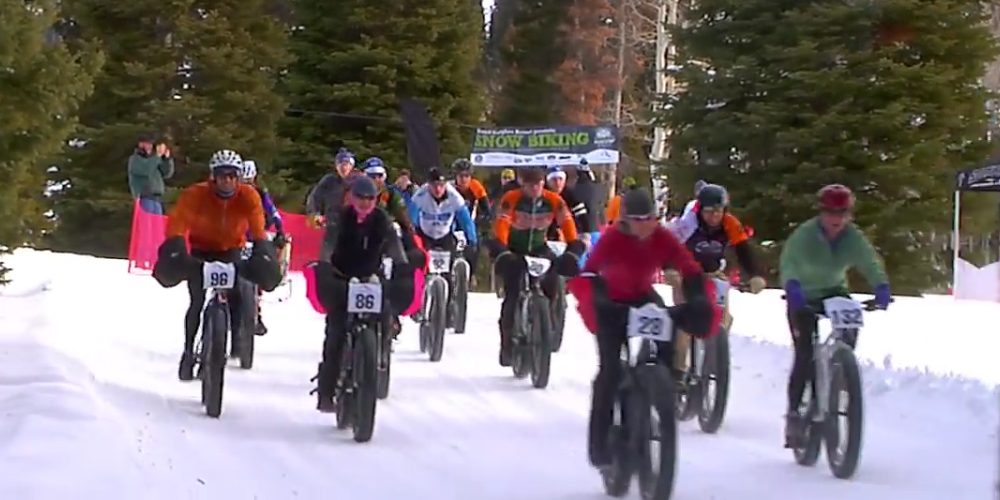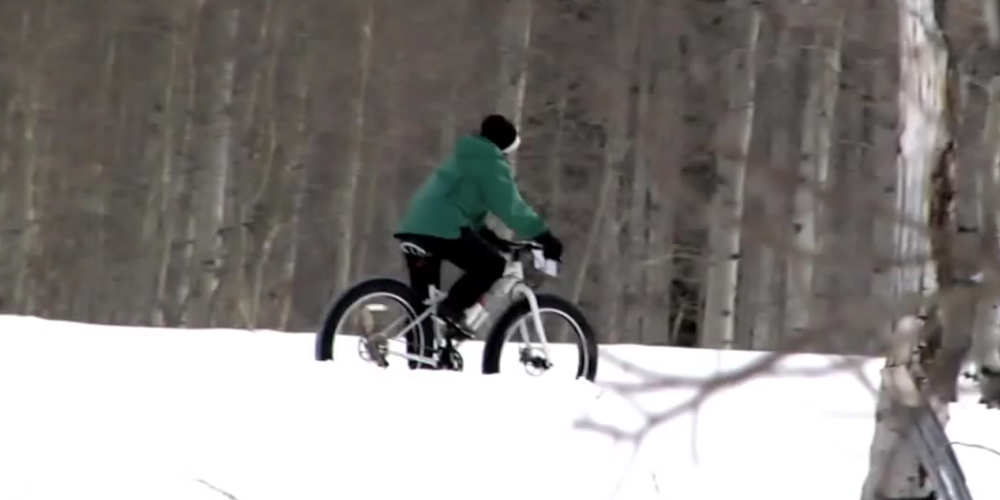Fat biking in East Kootenay
If you love eating up hundreds of kilometres of East Kootenay backcountry trails with your mountain bike every summer, why not add fat biking to your list of reasons why you love the Kootenays just as much in the wintertime? Although a rather new sport, fat biking is rapidly catching up to skiing and snowboarding on the list of favorite things to do when the snow flies.
As just about all mountain bike riders have likely discovered by experience, the bike you have and love just won’t perform in the snow, ice and slush the way you’d like. So you put it away each fall after one last ride before the first snowfall, look at it with longing once or twice over the winter, and before the last snow is shoveled off the driveway you pull it out of storage and lovingly prepare it for the first sign of spring.

What would a bike need to have in order to make it on your favorite trails in winter? Well, it would need some sort of flotation and traction, among other things. Only a few short years ago, back in 2005, a brilliant mind in Alaska came up with the idea to make a bike that could be ridden through the toughest winter conditions. And so the sport of fat biking was born.
If you’ve never been fat biking before, you may feel a bit embarrassed the first time you try it. Some claim that a whole different law of physics comes into play with fat bikes. Not gripping the ground like your summer bike, the fat bike just seems to float along on top of the snow — a really strange feeling at first. And you could swear that the tires need a whole lot more air. That is, until you hit some packed snow and you realize that it’s supposed to be that way.
The ideal fat biking trail is groomed, or at least packed, but for different conditions you can just change the tire pressure. Now if you could also change the wheels for the summer season… Well who knows, someone may have already had the idea.
Fat biking has become a popular sport in countries around the globe where winter and snow are synonymous. In Europe, the US, and Canada there are fat bike meets and major championship events everywhere, it seems. Right here at home, Panorama, Kimberley, Fernie and Kicking Horse ski resorts have set up fat bike rentals and offer instruction and guided tours. One of the reasons for its popularity is that, with its wide tires that handle any snow conditions, even a beginner can do it. So families are quickly hopping on their fat bikes to enjoy the winter together like never before.

What do you wear?
The key to being warm on the fat biking trail is to layer:
- Base layers – wool is best for tops and bottoms so your body temperature stays regulated. Avoid cotton as it stays wet and you’ll be left shivering!
- Socks – any socks that are thick and warm are alright; wool is best since it’ll keep your feet warm for the duration of your ride
- Footwear – for the first time or two, your hiking boots will be fine but if you are planning on doing more fat biking, you can get shoe covers which add insulation and water protection to your regular summer riding shoes. You can also get winter riding shoes designed for cold weather
- Bottoms – tights or leggings under a pair of regular riding shorts will work or a pair of base layer bottoms under a water-proof shell
- Tops – start with your base layer, then add a mid layer or soft shell and finish with a lightweght shell
- Accessories – A neckwarmer which converts to a headband to keep your ears warm is a great starter, then add insulated running gloves or ski gloves
Lastly, the helmet can be either your road cycling helmet or your mountain bike helmet as long as it fits properly and buckles securely.
East Kootenay not only has enough trails to try out but spectacular scenery no matter where you go and crisp fresh mountain air to fill your lungs. Try fat biking for yourself and make lots of new wintertime memories with your family.

